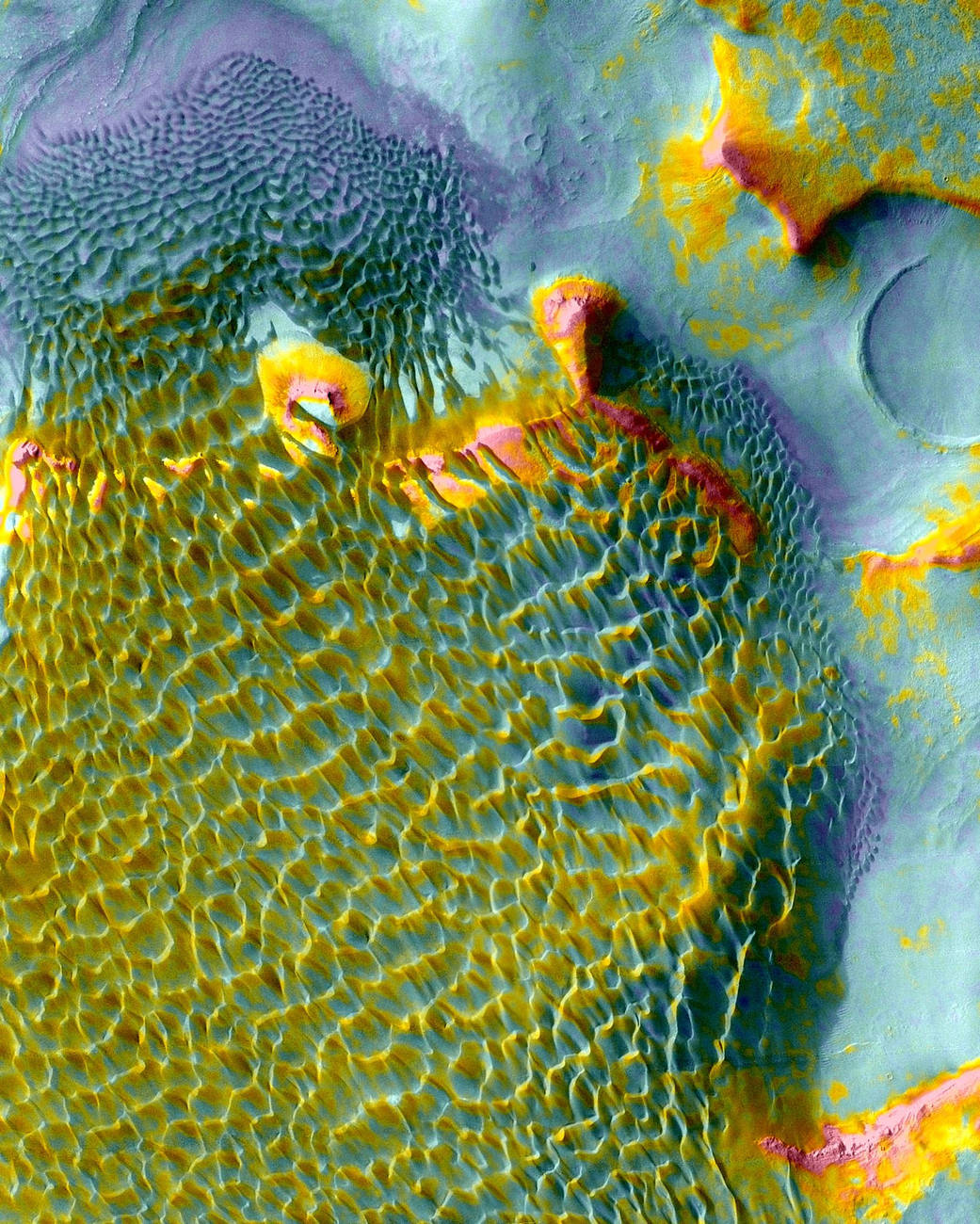
Rabe Crater lies among hundreds of thousands of other impact craters in the rough-hewn southern highlands of Mars. Spanning 108 kilometers (67 miles), Rabe is halfway between the martian equator and the south pole, and west of the giant impact basin Hellas. Two features distinguish Rabe Crater apart from most other craters on Mars. The crater has a flat floor with a pit sunk into it, plus a large field of dunes.
A pair of visible-wavelength images together with numerous infrared ones created this false-color Thermal Emission Imaging System (THEMIS) on NASA’s Mars Odyssey spacecraft view that captures portions of both the pit and the dune field. The colors portray the overnight surface temperatures: bluer colors indicate cold places, redder tints warm ones. This helps scientists distinguish areas covered in fine-grain material, such as dust and sand, from those where harder and rockier ground stands exposed.
The technique works because areas mantled in dust cool off quickly after sundown, while rocks hold onto daytime heat much better. When THEMIS looks down from orbit in the predawn hours, outcrops of bedrock are still glowing with warmth, while dusty ground has long since turned cold and dark.Image Credit: Image Credit: NASA/JPL/ASU




























